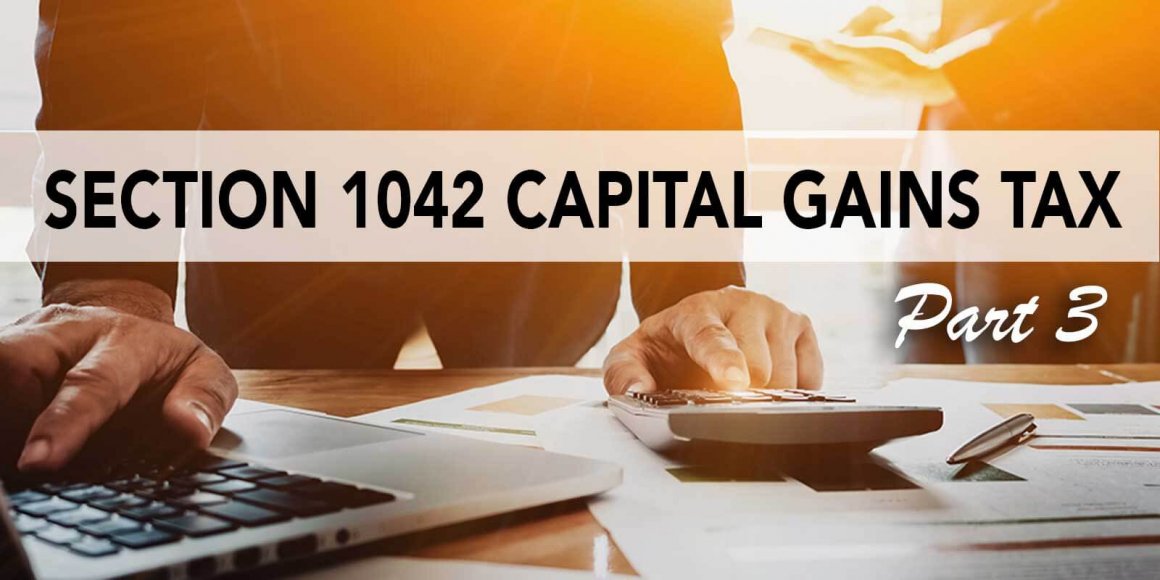Defer Long Term Capital Gains Taxes: Using a Margin Loan [Part 3]
This is the third article in a five part series that reviews the Section 1042 Capital Gains Tax Deferral alternative with respect to ESOP structures.
In part one of this series we presented the substantial tax benefit that business owners can receive when they sell all or part of their business to the employees as part of an Employee Stock Ownership Plan (“ESOP”) and take advantage of Section 1042 Capital Gains Tax deferral. In part two we further defined Section 1042 of the IRS Code. In this article, part 3, we will provide an example of how a selling shareholder can use Section 1042 to create liquidity by implementing a margin loan.
The Section 1042 – Utilizing a Margin Loan to Create Liquidity
As most ESOP transactions are done to create liquidity for the selling shareholder(s), the next question is, how does the process actually work? It might seem that the reinvestment requirements would make it difficult to realize liquidity from a sale. However, this is not the case as a market has developed around what is referred to as the “monetization” of the proceeds. Using this strategy, a seller has the ability to use a portion of the proceeds from the sale as collateral on a margin loan that allows him/her to meet the reinvestment requirement while generating significant liquidity. Here is a basic example of how it works.
Shareholder A sells 100% of her stock in Widget Co. for $20 million and wants to take advantage of the Section 1042 tax deferral. She also wants to generate significant liquidity out of the transaction. During the period leading to closing, Shareholder A initiates discussions with a financial institution or brokerage firm that specializes in Section 1042 rollover transactions. She is told that by pledging approximately 10% of the proceeds, she can use a margin account to purchase the full $20mm of QRP required to take full advantage of the tax deferral. In this case, $2 million allows her to purchase $20 million on margin, leaving her with $18 million in liquidity from the transaction.
Using this technique, there may be what is referred to as “negative carry” on the margin loan. This means that the interest expense on the margin loan may exceed the interest rate paid on the QRP securities. If the interest rate on the margin loan is 2% and the interest rate paid on QRP is 1%, there would be negative carry of 1% on the $18 million loan. This equates to an out of pocket cost of $180,000 annually on the loan. Keep in mind that the amount of negative carry, and whether it would even exist, is a function of the current interest rate environment. In some cases, when the interest rate on the investment approximates the interest on the margin loan, there may not be a negative carry on the investment.
In the next part of our discussion we will review the use of floating rate notes as a technique for creating liquidity for the seller, through the use of Section 1042.
CIRCULAR 230 NOTICE AND DISCLAIMER
The material contained herein: (i) is not an offer to sell or the solicitation of an offer to purchase an interest in any security, (ii) is not an offer to lend or a commitment to provide capital or financing, and (iii) is not accounting, investment, legal or tax advice. Butcher Joseph Hayes LLC and its employees do not offer accounting, investment, legal or tax advice. You must consult with your accounting, investment, legal or tax advisors regarding your specific circumstances. This material cannot be used for the purpose of avoiding penalties that may be imposed under tax laws. The information contained herein is provided for illustrative informational and discussion purposes only and may not be relied upon in any manner as accounting, investment, legal, or tax advice. All information with respect to companies and industry data have been obtained from sources believed to be reliable and current, but accuracy cannot be guaranteed. In regard to any performance information contained herein, past performance is no guarantee of future results and there can be no assurance that future investments will achieve comparable results. Butcher Joseph Hayes, its affiliates and their respective employees may receive compensation for providing various products or services discussed herein. Butcher Joseph Hayes offers securities through an affiliated entity: Southeastern Capital Partners BD, Inc., member FINRA.
ADDITIONAL RESOURCES


